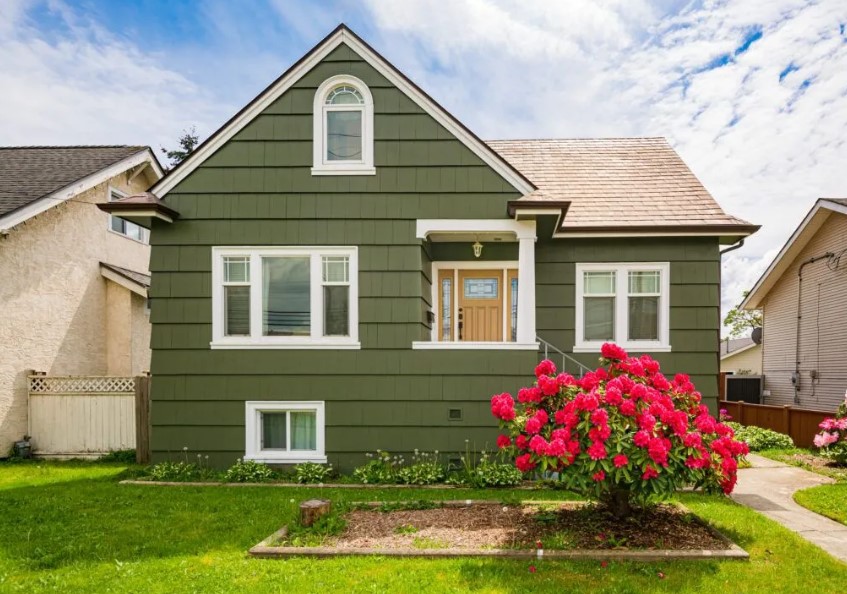Green Insulated Siding Options are revolutionizing home exteriors, offering a blend of style, sustainability, and energy efficiency. This isn’t just about slapping on some new siding; it’s about making a conscious choice for the planet and your wallet. We’ll delve into the various eco-friendly materials available, from recycled plastic to sustainable wood alternatives, exploring their manufacturing processes, durability, and overall environmental impact.
Get ready to discover how you can upgrade your home’s curb appeal while minimizing your carbon footprint.
Choosing green insulated siding isn’t just a trend; it’s a smart investment. We’ll break down the R-values, insulation properties, and long-term cost savings associated with each option. We’ll also explore the installation process, maintenance requirements, and aesthetic considerations, helping you make an informed decision that aligns with your home’s style and your commitment to sustainability. Think of it as an upgrade that pays you back – in energy savings and peace of mind.
Array
Choosing green insulated siding involves navigating a landscape of building codes and certifications designed to ensure both environmental responsibility and structural integrity. Understanding these regulations and certifications is crucial for homeowners and builders alike, impacting not only the legality of the project but also its long-term performance and environmental impact. This section clarifies the key aspects of regulatory compliance and eco-labeling for sustainable siding materials.
Compliance with building codes is paramount. These codes vary by region and jurisdiction, but generally address issues such as fire resistance, energy efficiency, and structural performance. For example, International Building Code (IBC) sections often specify minimum insulation values for exterior walls, directly impacting the choice of insulated siding. Local amendments to the IBC or adoption of other model codes further refine these requirements.
Ignoring these regulations can lead to building permit denial, fines, and even structural problems down the line. A thorough review of applicable codes is essential before starting any siding project.
Building Codes and Regulations, Green Insulated Siding Options
Building codes related to green insulated siding primarily focus on energy efficiency and fire safety. Many jurisdictions incorporate energy codes that mandate minimum insulation R-values for exterior walls. These R-values represent the material’s resistance to heat flow, with higher R-values indicating better insulation. The specific R-value requirements depend on the climate zone and the type of construction.
Additionally, fire codes often dictate the flammability ratings of exterior cladding materials, influencing the selection of siding materials. Some green siding options, like fiber cement, may require specific fire-resistant treatments to meet these requirements. It’s crucial to consult local building departments for precise requirements and to ensure chosen materials meet all applicable codes.
Eco-Labels and Certifications
Several certifications and eco-labels help consumers identify sustainable siding materials. These certifications typically involve third-party verification of environmental claims, providing an added layer of assurance. Examples include certifications focusing on recycled content, sustainable forestry practices, and low volatile organic compound (VOC) emissions. These certifications are invaluable tools for making informed choices. The presence of a reputable eco-label signals a commitment to environmental stewardship and transparency.
Significance of Certifications and Impact on Consumer Choice
Certifications and eco-labels significantly influence consumer choice by providing a standardized method for comparing the environmental performance of different siding materials. For example, a siding product certified by the Forest Stewardship Council (FSC) indicates that the wood used comes from responsibly managed forests. Similarly, a product with a low VOC certification ensures reduced indoor air pollution. This transparency empowers consumers to make environmentally conscious decisions, promoting the adoption of greener building practices.
The availability of these certifications also drives manufacturers to improve the sustainability of their products, creating a positive feedback loop in the market.
Ultimately, selecting green insulated siding is about more than just aesthetics; it’s about making a responsible choice for the environment and your future. By weighing the various factors—from initial cost and long-term energy savings to the environmental impact and aesthetic appeal—you can confidently choose a siding option that reflects your values and enhances your home’s value. So, ditch the guilt and embrace the green – your home (and the planet) will thank you.
Common Queries: Green Insulated Siding Options
What are the potential drawbacks of green insulated siding?
While generally beneficial, some green siding options might have higher initial costs compared to traditional materials. Certain types might also require specialized installation, potentially increasing labor expenses.
How do I find certified installers for green insulated siding?
Check with manufacturers for a list of certified installers in your area. You can also search online directories and review platforms for installers specializing in sustainable building materials.
Does green insulated siding affect home insurance premiums?
Some insurance companies offer discounts for energy-efficient home improvements, including green siding. Contact your insurer to inquire about potential savings.
Can I finance the installation of green insulated siding?
Many lenders offer financing options for home improvements. Explore options like home equity loans, personal loans, or energy-efficient home improvement loans.
How long does the installation process typically take?
Installation time varies depending on the size of your home and the type of siding chosen. It’s best to get a detailed estimate from your chosen installer.



